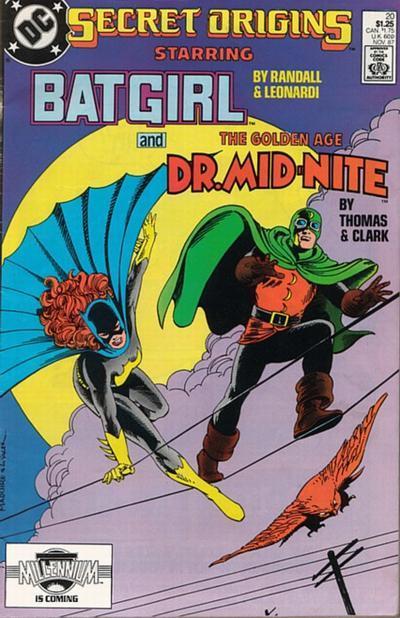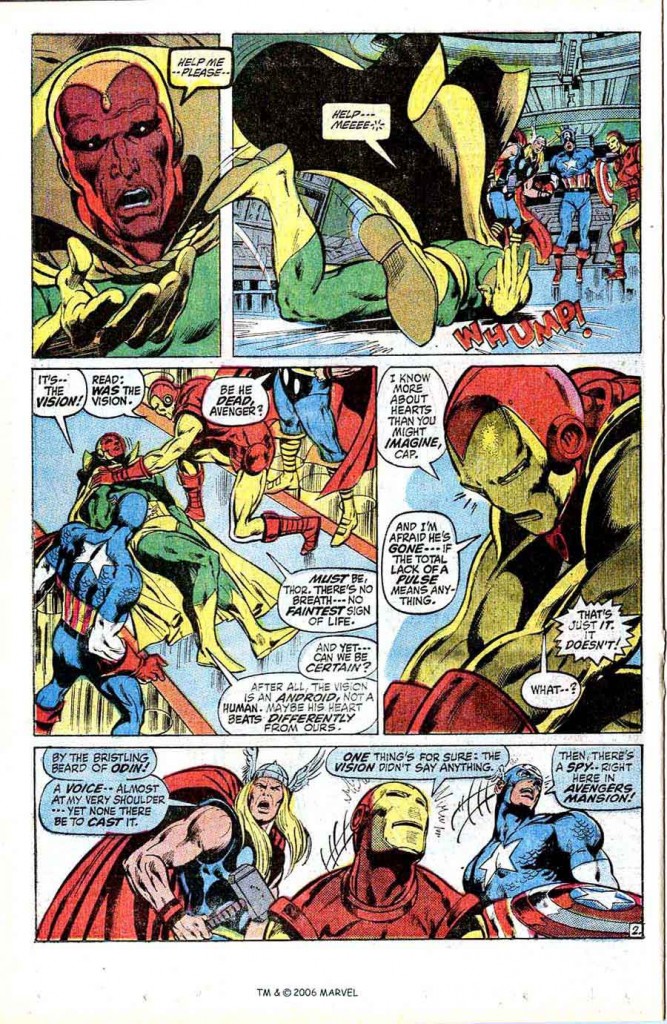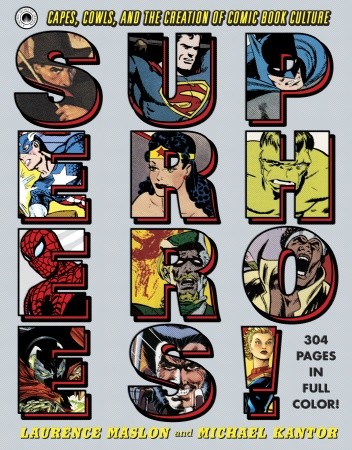Tonight, PBS premieres its three-hour documentary “Superheroes: A Never-Ending Battle” from director Michael Kantor and co-writer Laurence Maslon. The two also collaborated on a similarly named book now out from Random House. So after the show tonight (check local listings) come back here to see what these guys have to say:Of the two, Maslon, 54, is the one with the serious comics chops, as you’ll see below.
“I grew up on Long Island and always loved theater and movies (and comic books),” he said. He teaches at New York University and has written seven books, plus has a weekly NPR radio show in the Hamptons, called “Broadway to Main Street”, which is about theater music. His favorite superhero is … Dr. Mid-Nite!
Kantor, 52, grew up in the suburbs outside of New Haven, Conn., and began working on documentaries with Steve Ives and Ken Burns in the late 1980s, right when Burns’ Civil War series took off. In 2005, he won an Emmy Award for Outstanding Nonfiction Series for “Broadway: The American Musical.”
Why this project and why now?
Kantor: We started this project in October of 2009 when we interviewed Stan Lee in Los Angeles. For me, interviewing “Stan the Man” was kind of like interviewing George Gershwin, Steven Spielberg and Philip Roth all at once — I think he is that important to American culture. I’m thrilled to tell Stan’s story, along with those of major comic book figures like Joe Simon (who co-created Captain America), Jerry Robinson (who helped to create the Joker) and Carmine Infantino (who revitalized the Flash) who have passed on since we interviewed them a few years ago. In the past two decades, thanks largely to movies, superheroes have moved into the mainstream, and it’s exciting to see the creators get some much-deserved credit.
What do you hope to accomplish with this project?
Kantor: Like my other series, “Broadway: The American Musical” and “Make ‘Em Laugh: The Funny Business of America,” this film aims to use a popular American artform as a kind of historical barometer. What did we love, what did we worry about, how did we depict our heroes and villains, what is valuable to us — hopefully the narrative of “Superheroes” is not only entertaining, but explores these questions.
Are you a big comic-book reader?
Maslon: I certainly was—from 1967 to 1977, I bought every superhero comic there was— even Atlas/Seaboard! My friends and I went to the very first comic book conventions in the early 1970s and bought back issues of almost every Marvel title. College intervened, then adulthood; it was great to get back in the super-saddle with this project and dive into Civil War, Animal Man, Invincible, the Waid/Rivera Daredevil, the new Hawkeye: great, great stuff.
Kantor: Over the last four years, I’ve read a lot of comics, but prior to that, my 16-year-old son probably read more comic books than I had. I approached this project just as Ken Burns approached the Civil War film series — Ken had never fought in a war, had never lived in the 19th Century, but felt that the story needed to be told. Superheroes are not just part of a uniquely American artform, but they are a cultural touchstone for almost all Americans. Who doesn’t recognize the “S” shield on Superman’s chest?
Who’s your favorite superhero? Why?
Kantor: I am a fan of Spider-Man — perhaps because when I was kid, like everyone else, I felt outside of the “in-crowd.” Spider-Man has real-life problems. He also has a really cool look – thanks, Steve Ditko!
Maslon: Growing up, I had a real thing for the Golden Age Dr. Mid-Nite. Go figure. I have no idea why — he had a cool costume (red and green), and he was blind, but not really, which was fascinating to me. I grew to love the Vision (green and red? You tell me.). I always had a thing for the superheroes who were more down to earth: I read every Doc Savage novel, and still think Batman is the greatest idea for a superhero and the Spirit and Daredevil always interest me in their various iterations. (The Darwyn Cooke Spirit/Batman team-up was genius.)
What’s your fondest childhood comic-book memory?
Maslon: I’ll never forget Avengers #93 (a Giant-Sized issue with Neal Adams at his ultimate prime) as an actual comic book. But, when I was about 15, a friend and I customized Aurora models into different superheroes (decades before you could get every hero of any kind as an action figure). We exhibited them at a Marvel Con in 1975 and our best and most ambitious model was Galactus—and Stan and Jack (Kirby) came by and signed it!!
Kantor: From a kooky ad in the back pages of a comic, I once ordered a “real tank.” I imagined that, as an eight year-old, I would be able to drive it myself across town, crushing all who opposed me. When it arrived, it was made of cardboard and wouldn’t even roll. I traded it to a friend for a pair of “genuine” alligator skin cufflinks.
What was the biggest challenge in pulling this together?
Kantor: The biggest challenge on these kind of series is what to leave out. You can’t tell every story, so you have to choose stories that speak to larger themes and issues. The other huge challenge is raising funds for PBS documentaries. It is getting tougher and tougher to create this kind of program.
Three hours is a long running time for a project like this. Nevertheless, was there anything you wish you could have spent more time on?
Kantor: The nice thing about creating a companion book is that everything that you have to leave out of the TV series can find a place in the book.
You two have worked together before. How did this project develop for you?
Maslon: Michael and I worked together on the projects involving Broadway and American comedy, two subjects I am very passionate about. He came to me with the idea of a documentary about the history of comic book superheroes — something I am EXTREMELY passionate about, which had been suggested to him by another (highly qualified) writer. I told Michael, “If you don’t ask me to work on this series, I will kill you.”
How did you curate what would be emphasized in the book vs. what’s in the show?
Maslon: Part of the difference is simply the difference between print — which is the essential comic book medium — and film, which makes certain things harder (there’s no real pixilation in comic books) and certain things easier (film clips). My goal with the book was to write the book I always wanted to read when I was 12: a full narrative history of comic books, but with information about films, television and other media, along with the most essential artwork of the last 75 years. A book formatted the way ours is also allows for sidebars, archival sections and so on, so we can really drop down deep into detail; stuff like the Justice Society, or Kirby’s Fourth World, or the Amalgam cross-overs — things that would be really fun for fans, but perhaps too esoteric for a general viewership on TV.






Trackbacks/Pingbacks